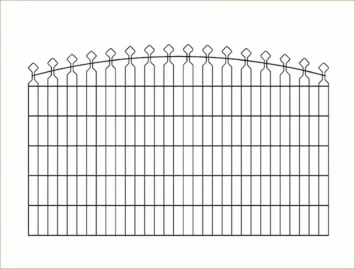Wire mesh fencing is a versatile and durable solution for a variety of applications, including property boundaries, livestock enclosures, and safety barriers. Properly securing wire mesh fencing is essential to ensure its stability, longevity, and functionality. This article delves into the step-by-step process of securing wire mesh fencing, covering the necessary tools, techniques, and best practices to achieve a reliable and aesthetically pleasing installation.

The Importance of Properly Securing Wire Mesh Fencing
Securing wire mesh fencing correctly offers several key benefits:
Enhanced Durability: A securely fastened fence withstands environmental stressors and physical impacts, extending its lifespan.
Improved Security: A well-secured fence is difficult to breach, providing better protection for enclosed areas.
Aesthetic Appeal: Proper installation ensures the fence looks professional and well-maintained.
Functional Integrity: Ensures the fence performs its intended function, whether for containment, protection, or boundary demarcation.
Preparation: Tools and Materials Needed
Before starting the installation, gather the following tools and materials:
Wire mesh rolls
Fence posts (wooden or metal)
Post hole digger or auger
Concrete (for setting posts)
Fence clips, staples, or ties
Tensioning tools (come-along, wire strainers, or ratchet tensioners)
Hammer and nails or screws
Pliers and wire cutters
Further reading:Measuring tape
Level
Step-by-Step Guide to Securing Wire Mesh Fencing
Plan and Mark the Fence Line: Begin by planning the layout of your fence. Use stakes and string to mark the fence line, ensuring it is straight and aligns with your property boundaries. Mark the locations for corner posts, end posts, and line posts.
Install Corner and End Posts: Corner and end posts provide the primary support for the fence. Dig holes for these posts using a post hole digger or auger, making the holes deep enough to anchor the posts firmly (typically one-third of the post length). Set the posts in concrete to enhance stability and allow the concrete to cure completely before proceeding.
Set Line Posts: Line posts should be installed at regular intervals along the fence line (usually 8-10 feet apart). Ensure these posts are perfectly aligned with the corner and end posts, and set them securely in the ground. Use a level to check that all posts are plumb.
Attach the Wire Mesh to the First Post: Unroll the wire mesh along the fence line. Attach one end of the mesh to a corner or end post using fence clips, staples, or ties. Start from the top of the post and work your way down, ensuring the mesh is evenly distributed and straight.
Tension the Wire Mesh: Using a tensioning tool, such as a come-along, wire strainer, or ratchet tensioner, apply tension to the wire mesh. Attach the tool to the mesh and the opposite corner or end post. Gradually increase the tension, making sure the mesh remains level and aligned. Avoid over-tightening, which can damage the mesh.
Secure the Tensioned Mesh: Once the desired tension is achieved, secure the mesh to the opposite corner or end post. Use fence clips, staples, or ties to fasten the mesh, starting from the top and working downward. Ensure the mesh is taut and firmly attached.
Fasten the Mesh to Line Posts: Secure the wire mesh to the line posts using fence clips or ties. This step provides additional support and maintains the tension along the entire fence line. Ensure the mesh is attached tightly to prevent sagging.
Inspect and Make Adjustments: After securing the wire mesh, inspect the entire fence line for any loose or uneven sections. Make necessary adjustments to ensure the fence is uniformly tensioned and properly aligned.
Best Practices for Securing Wire Mesh Fencing
Use Quality Materials: Invest in high-quality wire mesh and fasteners to ensure the fence's durability and longevity.
Regular Maintenance: Periodically check the fence for signs of wear or damage and make repairs as needed to maintain its integrity.
Environmental Considerations: Ensure the fence is installed in a way that minimizes impact on the surrounding environment and complies with local regulations.
Conclusion
Securing wire mesh fencing is a meticulous process that requires careful planning, the right tools, and attention to detail. By following a systematic approach and adhering to best practices, you can achieve a durable, secure, and aesthetically pleasing fence that meets your specific needs. Whether for residential, agricultural, or industrial purposes, a well-secured wire mesh fence provides reliable protection and enhances the overall functionality of the enclosed area.
Previous
Related Articles
Comments
Please Join Us to post.
0